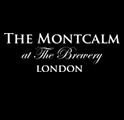As a world city and the nation’s capital, London has long dominated British life, culture, and politics; so, no surprise then, a highly concentrated number of the UK’s monuments and memorials commemorating the contributions of individuals to the country’s many and various war efforts can be found dotted throughout the place – especially its centre. Thus, if you’re something of a history buff and looking to visit the city via London hotels packages, there’s a trio of monuments you can’t afford to miss…

The Cenotaph
(Whitehall SW1)
Something of a centrepiece to Whitehall, the thoroughfare that runs through the heart of Westminster and the aorta of British political power, the Cenotaph is quite simply the most important and significant war memorial in the entire UK, having been the focus for remembrance and commemoration of British military loss for almost the past 100 years – even if, curiously enough, it was never meant to be a permanent fixture of the capital.
Translating as ‘empty tomb’, it was first erected – in an original wooden and plaster incarnation – to commemorate the enormous losses suffered in the First World War (and, thus, is dedicated to ‘The Glorious Dead’) and to coincide with July 1919’s Peace Day events. Designed by British architect Edwin Landseer Lutyens, who’d been approached for its construction by the legendary WWI-overseeing Prime Minister David Lloyd George, it was intended as a tangible object and site for the mourning of husbands, sons, brothers, relations and friends who’d been killed or died through the conflict but had no known grave.
Following this original version’s removal from Whitehall in January 1920, a new memorial made from Portland stone was then installed, which was then unveiled by King George V on Armistice Day (11th November) 1920 and has, thereafter, played an iconic role in each and every subsequent Armistice Day up to the present day.

Women of World War Two Memorial
(Whitehall SW1)
A relatively recently erected memorial – and done so to address a decades-long overlook – this one commemorates the contribution of women during the Second World War, in particular. It’s true that London (and the UK as a whole) has a plethora of war memorials, but the absolute vast majority are aimed at respectfully remembering men in military conflict, not women; so, surely an addressing of this gender imbalance was long overdue?
A dramatic piece of sculpture, having been unveiled by The Queen and dedicated by Baroness Boothroyd in 2005, it originally featured a female air raid warden sheltering children, only for the design to be simplified before completion. In spite of that, the bronze monument is 6.7m in height, 4.9m in length and 1.8m in width, while it features reliefs of 17 separate items of clothing and uniforms all round its sites (representing the vast array of jobs and roles undertaken by women during the war effort, including those worn by members of the Land Army, the Women’s Royal Naval Service and the police, as well as a welding mask) and its typeface matches that of wartime ration books.
Battle of Britain Memorial
(Victoria Embankment SW1)
Like the other two monuments, this one’s located in the Westminster area (specifically on the riverside Victoria Embankment), ensuring then that it’s very easy to reach via the Tube from West End accommodation, should you be taking advantage of a hotel rewards scheme such as The Montcalm Club. Unveiled in 2005 by Prince Charles and the Duchess of Cornwall – and in the presence of several surviving WWII airmen so often referred to since the conflict as ‘The Few’ – it’s specifically a commemoration of the courage and dedication shown and loss of life endured by the air crews who faced the German air force during 1940’s ‘Battle of Britain’ to prevent an invasion of the UK in the first half of the war.
A panelled granite monument that’s 25m long, the memorial actually occupies a lengthy plinth along the Embankment that was originally put in place as a smoke outlet for long since retired Tube trains (those of the Victorian-era steam engine-powered variety). Today, converted into the memorial then, it features a walkway cut through its middle as well as high-relief bronze panels that depict scenes from aerial dogfights of the Battle of Britain. Its centrepiece is a more-or-less life-sized sculpture of airmen scrambling for their planes prior to a battle and its outside is lined with plaques on which are listed the names of the near 3,000 airmen (from 14 different countries) who flew for the Allies during WWII.


















